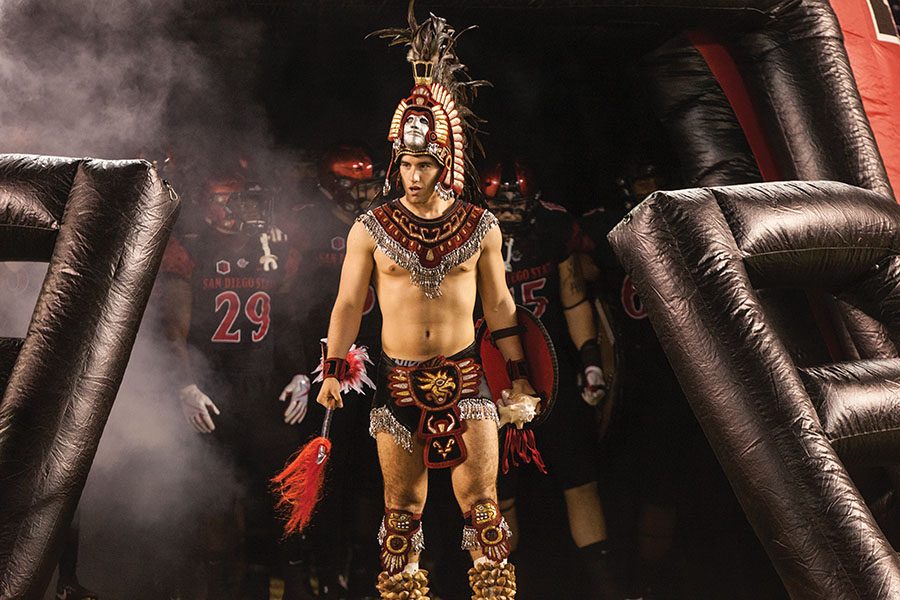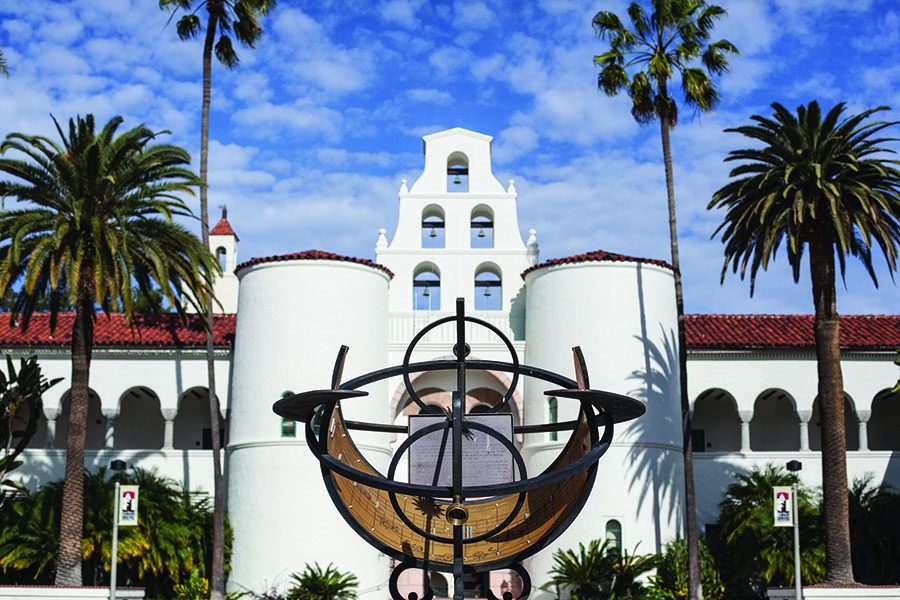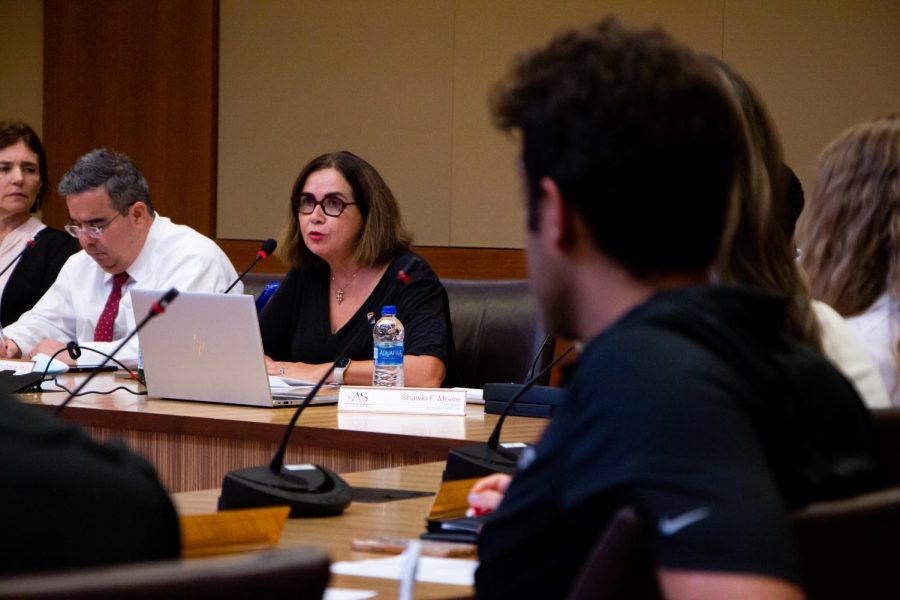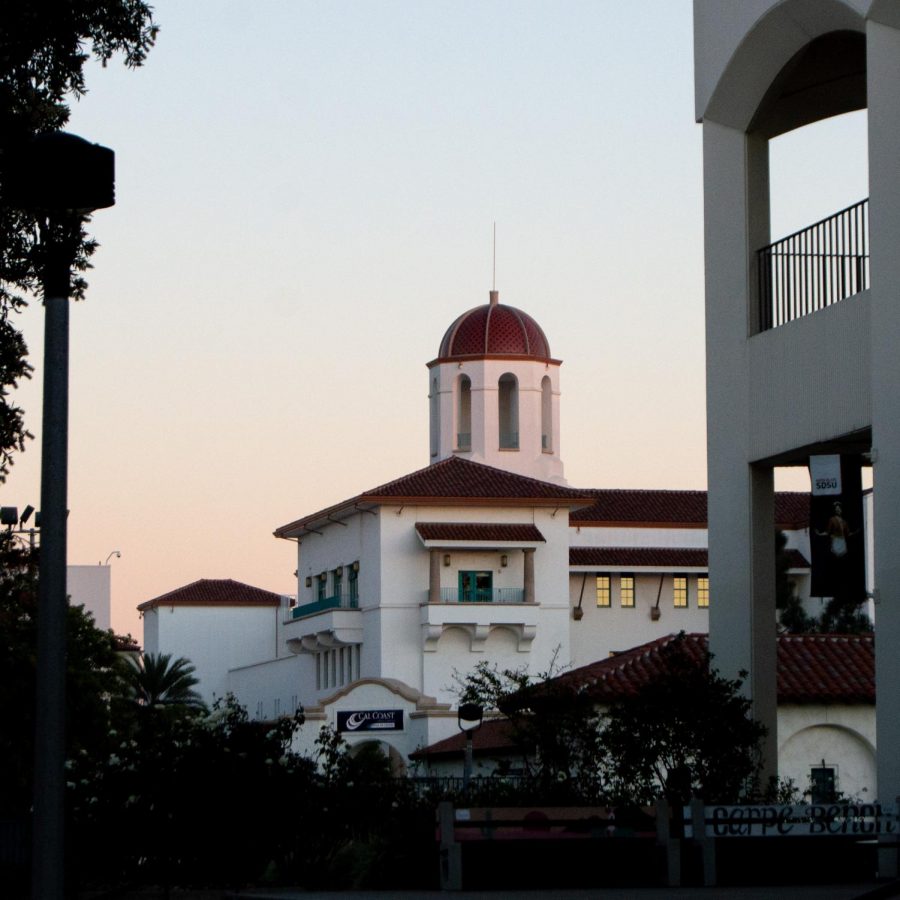The issue: A University Senate resolution to retire the Aztec Warrior mascot has galvanized alumni against the current generation of students and led some to threaten to end financial support of the university.
Our take: While this board has not taken a position on the resolution, this university is bigger than its mascot, and alumni should recognize and respect students regardless of what costumed character runs around at sporting events.
“Can someone tell me just what happened in the last 20 or so years that everyone has become so damn sensitive?” — Joel Sartan, The Daily Aztec, Jan. 27, 2002.
That statement would have been at home in any number of social media comment threads after the University Senate’s mascot resolution vote last week. However, they came from another fight over the controversial mascot.
Then-president Stephen Weber had defied student wishes to keep the Indian caricature “Monty Montezuma” and replaced him with a tamer, less-exuberant “Ambassador.” That wildly unpopular incarnation was replaced in 2004 with the mascot with which most are familiar today, the Aztec Warrior.
Defensive strategies around the mascot have not changed much over the past two decades. Almost 16 years later, Sartan’s opinion defensively smearing opponents of the mascot as overly-sensitive politically correct babies shows these ideas are nothing new and far from original.
Sartan, then a senior sports writer at The Daily Aztec, continued his piece bemoaning the loss of Monty.
“It seems like every group that’s out there is looking for an excuse to be a victim, and they use political correctness as their shield,” he said.
SDSU students face a myriad of issues in school — food insecurity, student debt, housing and safety — yet nothing stirs up as much consternation among alumni as do efforts from activists to get the university to move past its native mascot and moniker.
Too many alumni seem to see the mascot resolution as an invitation to jump in with both feet and trash this generation of students with little regard for the facts of the story or the concerns the resolution raises.
First, despite what some reports stated, the University Senate is not a student governmental body — it’s comprised of professors, lecturers, staff and four students. SDSU’s student government is Associated Students, which rejected a similar resolution last spring, 14-12. The senate passed its resolution 52-15.
Secondly, as reported by The Daily Aztec, the senate’s vote is advisory and non-binding, meaning President Sally Roush could choose not to adopt it at all, or to adopt only parts of it.
Finally, there appears to be a misconception this issue was settled years ago. It was not.
The university narrowly avoided an NCAA ban on Native American mascots in 2005, four years after ditching Monty. Another resolution was soundly rejected by A.S. in 2014.
However, a master’s thesis published by lecturer Ozzie Monge in 2015 reignited the long-simmering mascot fight last year, resulting in both the spring A.S. resolution and the current one passed by the senate.
Another troubling trend observed in the backlash to this resolution was that for many alumni, their affinity for their alma mater runs only as deep as this mascot. Many argued that this was part of their heritage. Binge drinking while dressed in an Indian costume might have been fun in the 1980s, as one Facebook commenter reminisced, but that is not heritage.
It’s important for the alumni of SDSU to ask themselves what their time here meant to them, and what it is about this institution that, years later, still stirs emotion and nostalgia. Is a guy in a costume really the only tether there is?
Regardless of the nostalgia — and donor checks — of alumni, this university, first and foremost, exists to serve its students.
The CSU mission statement includes clauses to “advance and extend knowledge, learning and culture,” and “to encourage and provide access to an excellent education to all.” Nowhere in the mission statement is there a clause to kowtow to the demands of nostalgic alumni, no matter how deep their pockets.
Another clause in the CSU mission statement is “to provide opportunities for individuals to develop intellectually, personally and professionally.”
Ideally, this intellectual development doesn’t end once a graduate walks across the stage, but continues throughout life.
President Roush is unlikely to sign off on this resolution. However, that doesn’t mean the issue goes away. The NCAA ban on Native American mascots stands, and as long as this university has a guy in an indigenous costume as its mascot, the issue will persist.
And when new ideas, or new ways of thinking of our past emerge, perhaps we should strive for the continued intellectual development the university exists to foster, rather than dismissing every challenging idea as endemic of a generation of “snowflakes.”











